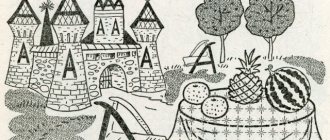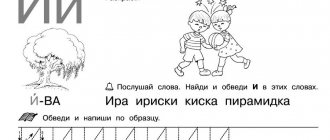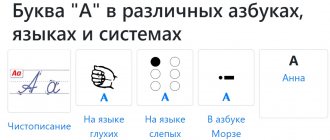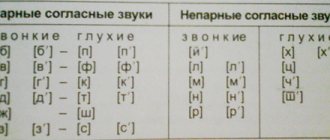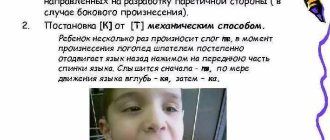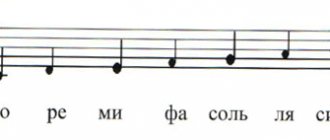Examples of words starting with the letter "O"
#WordsWords starting with the letter "O"Window, lake, he, island, fireWords ending with the letter "O"It, echo, frill, bureau, wasWith the letter "O" in the middle of the wordGod, bolt, eyebrow, flea, amphoraWords containing several letters " O "Eye, vegetable, point, hair, peas, goodCountriesUAE, Oman. See all countries starting with the letter “O” Cities Odessa, Omsk, Oslo, Orel, Orenburg. See all cities starting with the letter “O”AnimalsEagle, lobster, deer, sturgeon, donkey, wasp. See all animals starting with the letter “O” Vegetables, fruits and berries Cucumber, nuts, sea buckthorn. Professions Optometrist, operator, officer, waiter, security guard, hunter. See all professions starting with the letter “O” All names starting with the letter “O” with meanings and origins Male names Oleg, Osip, Oscar, Ostap, Osip. See all male names starting with the letter “O”, as well as their meaning and origin. Female names Olga, Oksana, Olesya, Olivia, Odette. See all female names starting with the letter "O", as well as their meaning and origin1.8. Vowel sounds in stressed and unstressed positions
As noted (see paragraph 1.5. Speech sounds and letters), in the Russian language there are 6 main (that is, those pronounced under stress) vowel sounds :
| A | ABOUT | E | U | Y | AND |
which are indicated on the letter by 10 letters :
| A | I | ABOUT | Yo | E | E | U | YU | Y | AND |
1. The use of vowels as part of a word has some features in the Russian language:
- The vowel [s] at the beginning of words, as a rule, does not appear; initial [s] is possible in rare borrowed proper nouns.
Oyya, Ynykgan.
- The sound [s] is used only after hard consonants.
Smoke [smoke], rear [rear].
- The sound [and] is used only after soft consonants.
Physicist [f'iz'ik].
- The spelling of the letter and after zh, sh, ts (these sounds are always hard) is not determined by pronunciation: the letter combinations zhi, shi, qi are pronounced as [zhy], [shi], [tsy].
- The vowel [s] is pronounced in place of the letter and also at the beginning of the word after a preposition for a hard consonant (the preposition does not have its own stress and is adjacent to the subsequent word).
From iris - [from-y]ris.
- The vowel [e] is used in most cases after soft consonants.
Children [d'et'i], weight [v'es].
But there are digressions here. The sound [e] is combined with hard consonants:
- after [g], [w], [ts];
Gesture [gest], six [shes't'], prices [tsen].
- in some foreign words;
Test [test], pace [temp].
- in some compound words.
HPP, VTEK.
2. A characteristic feature of Russian pronunciation is the different sound of vowels under and without stress.
- A vowel in a stressed position is in a strong position , that is, it is pronounced most clearly and with the greatest force. A vowel in an unstressed position is in a weak position , that is, it is pronounced with less force and less clearly.
3. In an unstressed position (in a weak position), all vowel sounds are pronounced with less force, but some of them retain their qualitative characteristics, while others do not:
- The vowel sounds [i], [ы], [у] (letters i, ы, у, yu) do not change the sound quality in an unstressed position;
Mil [m'il] - sweet [m'ila], lived [zhyl] - lived [zhyla], jester [jester] - (no) jester [jester].
The exception is the sound [and]: at the beginning of a word, if in the flow of speech the word merges with the previous word ending in a hard consonant, the sound [s] is in place;
In exile [in exile]. - The vowels [a], [o], [e] (letters a, i, o, e, e, e) change the sound quality in an unstressed position.
4. Russian literary pronunciation is usually called “akay” and “hiccuping”.
- In the pre-stressed syllable after hard consonants in place of the vowels [a], [o], [e] (in the position after hard ones, this sound is rarely found in the Russian language), a sound close to [a] usually sounds. In the school version of the transcription it is usually denoted as [a], although this sound is not so open, therefore in linguistics a special sign [Λ] is used to denote it.
My [moj] - my [mΛja] or [maja], gave [gave] - gave [dΛla] or [gave].
- In the pre-stressed syllable after soft consonants in place of the vowels [a], [o], [e], a sound close to [i] sounds. In the school version of the transcription it is usually denoted as [i], although this sound sounds more like [i] with the overtone [e] - [ie].
Wed: took [v'al] - took [v'iela] or [v'ila], carried [n'os] - carried [n'iesla] or [n'isla], white [b'el] - white [b'iela] or [b'ila].
- It is with these features of Russian pronunciation that the need to check unstressed vowels is connected with the help of related words in which this vowel is stressed, that is, in a strong position.
- The position of the vowel in the first pre-stressed syllable is called I weak position : the force of exhalation when pronouncing a pre-stressed syllable is approximately one and a half times less than when pronouncing a stressed syllable.
| So, in the first weak position in place of [a], [o], [e] after hard consonants there is a sound close to [a] - [Λ], after soft consonants there is a sound close to [i] - [ie] . |
5. An exception may be some words with vowels [a], [o], [e] in the first weak position after hissing [zh], [sh] and after the sound [ts]:
- after hard [zh], [sh], [ts] before a soft consonant, in place of [a] there is usually a sound intermediate between [s] and [e] (indicated [ые]);
To feel sorry for [zhyel'et'], horses [lyshyed'ej], twenty [dvatsyet'i].
- in place of the letter e after [zh], [sh], [ts] there is a sound intermediate between [s] and [e], - [ye];
Wife [zhyena], sixth [shyestoj], price [tsyena].
- after hard [zh], [sh] in place of [a] there is a sound close to [a] – [Λ], as well as after other hard consonant sounds.
Ball [ball] – balls [shΛry].
6. In other unstressed syllables (second, third pre-stressed syllables, unstressed syllables) the vowels [a], [o], [e] sound even weaker and unclear.
- The position of the vowel in other unstressed syllables (not in the first pre-stressed) is usually called weak position II : the force of exhalation when pronouncing such syllables is three times less compared to a stressed syllable.
- In the school course, these sounds are not specifically discussed.
- In linguistics, such sounds are usually called reduced, that is, “weakened.” To designate them, the following signs are most often used: “er” [ъ] – after hard consonants, “er” [ь] – after soft consonants. (This resource uses a simplified version of vowel transcription, that is, the pronunciation features of vowels [o], [a], [e] in closed and open overstressed syllables are not taken into account, the difference in pronunciation [o], [a], [e] in overstressed syllables syllable, etc.)
For example:
after hard consonants: brownie [d'mavój], fish [ryb'], roof [krysh'], entirely [ts'l'ikom];
after soft consonants: private [r'davoj], field [pol'j], watchmaker [ch'sΛfsch'ik].
7. The exception is the II weak position of vowels at the absolute beginning of the word [a], [o]. In place of these vowels at the beginning of the word, there is not a reduced “er” [ъ], but a sound close to [a] – [Λ], as in the first weak position after hard consonants.
Cucumber [Λgur'ets]; monkey [Λb'iez'janʹ].
Analysis algorithm when transcribing a word
| 1. | Break the word into syllables and add stress. Regret - so-zha-le-ni-e. |
| 2. | Underline the stressed vowel with two lines. Regret. A stressed vowel does not change its sound. Just keep in mind that the letters e, e, yu, i can mean:
|
| 3. | Place the number of the weak position above the unstressed vowels: first pre-stressed syllable – I weak position; the remaining unstressed syllables are II weak position. CoII-zhaI-le-niII-eII. If among these vowels there are sounds [i], [ы], [у] (letters i, ы, у, yu), then emphasize them with one feature: they do not change their sound in an unstressed position. SoII-zhaI-le-niII-eII – in an overstressed syllable the vowel [i] does not sound. |
| 4. | Determine which vowel sounds sound in weak position I (first pre-stressed syllable) in place of the letters e, e, o, a:
SoII-zhaI-le-niII-eII – in the syllable zha the vowel sounds [е]. Please note that if the letters e, i denote two sounds: a consonant [j] + a vowel [e], [a], then these vowels also change according to the general rules: j is a soft consonant, which means that after it the letters e, i the sound [ee] will sound. Announced - oII-byaI-vil-syaII - the first pre-stressed syllable byaI will sound like [b'jie]. |
| 5. | Determine which vowel sounds sound in the second weak position (any unstressed syllable, except the first pre-stressed one) in place of the letters e, e, o, a:
Please note that if the letters e, i denote two sounds: a consonant [j] + a vowel [e], [a], then these vowels also change according to the general rules: j is a soft consonant, which means that after it the letters e, i the sound [ь] will sound. SoII-zhaI-le-niII-eII – the syllable с with a hard consonant sounds like [съ]; the syllable e ([j] + vowel) sounds like [ь]; oII-byaI-vil-syaII - o at the absolute beginning of the word will sound like [Λ], the syllable sya with a soft consonant will sound like [s'ь]. |
Exercises for the topic “1.8. Vowel sounds in stressed and unstressed positions"
►
Consonants and letters
The Russian language has 21 consonants and 36 consonant sounds. The discrepancy in quantity appears due to the fact that many consonants were paired according to deafness/voice, hardness/softness.
On what basis are consonants divided into voiceless and voiced?
Voiceless and voiced consonants are divided according to the presence of noise and voice when pronounced.
Voiceless consonants are characterized by noise. Voice and noise are involved in the formation of voiced consonants. Voiced and voiceless consonants help distinguish words:
- steam - bar,
- count – goal.
Most of the voiced and voiceless consonants, like soldiers, come into pairs.
But among the consonants there are single sounds.
How to distinguish between hard and soft consonants?
Soft and hard consonants differ in pronunciation. The main role when pronouncing soft consonants is played by the tongue. The middle part of the tongue rises to the palate.
Basically, hard and soft consonants are combined into pairs in orderly rows:
Unpaired sounds are considered:
- always hard consonants – [zh], [sh], [ts];
- always soft consonants – [h'], [h'], [th'].
In writing, soft consonant sounds are indicated by the symbol ['] at the top right: night - but [h'].
Why do we need color schemes?
When analyzing sounds and letters of a word, it is convenient to use color schemes. They help to visually determine what sounds a word consists of. There are established color correspondences for various sounds:
- Vowels are highlighted in red;
- Iotated vowels are colored green-red;
- Hard consonants are marked blue;
- Soft consonants are painted green.
Soft and hard signs are not distinguished by color, since they do not produce sounds.
